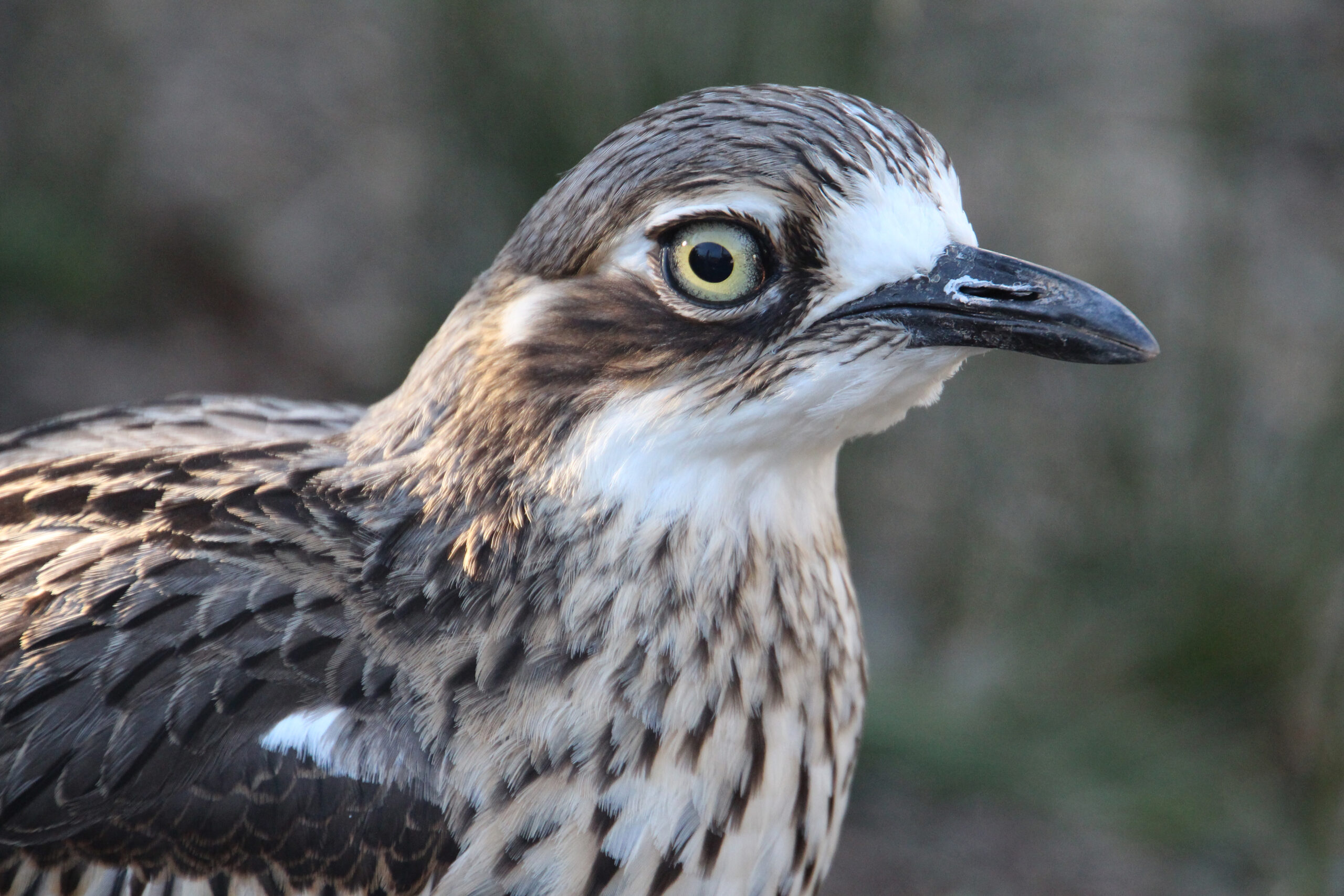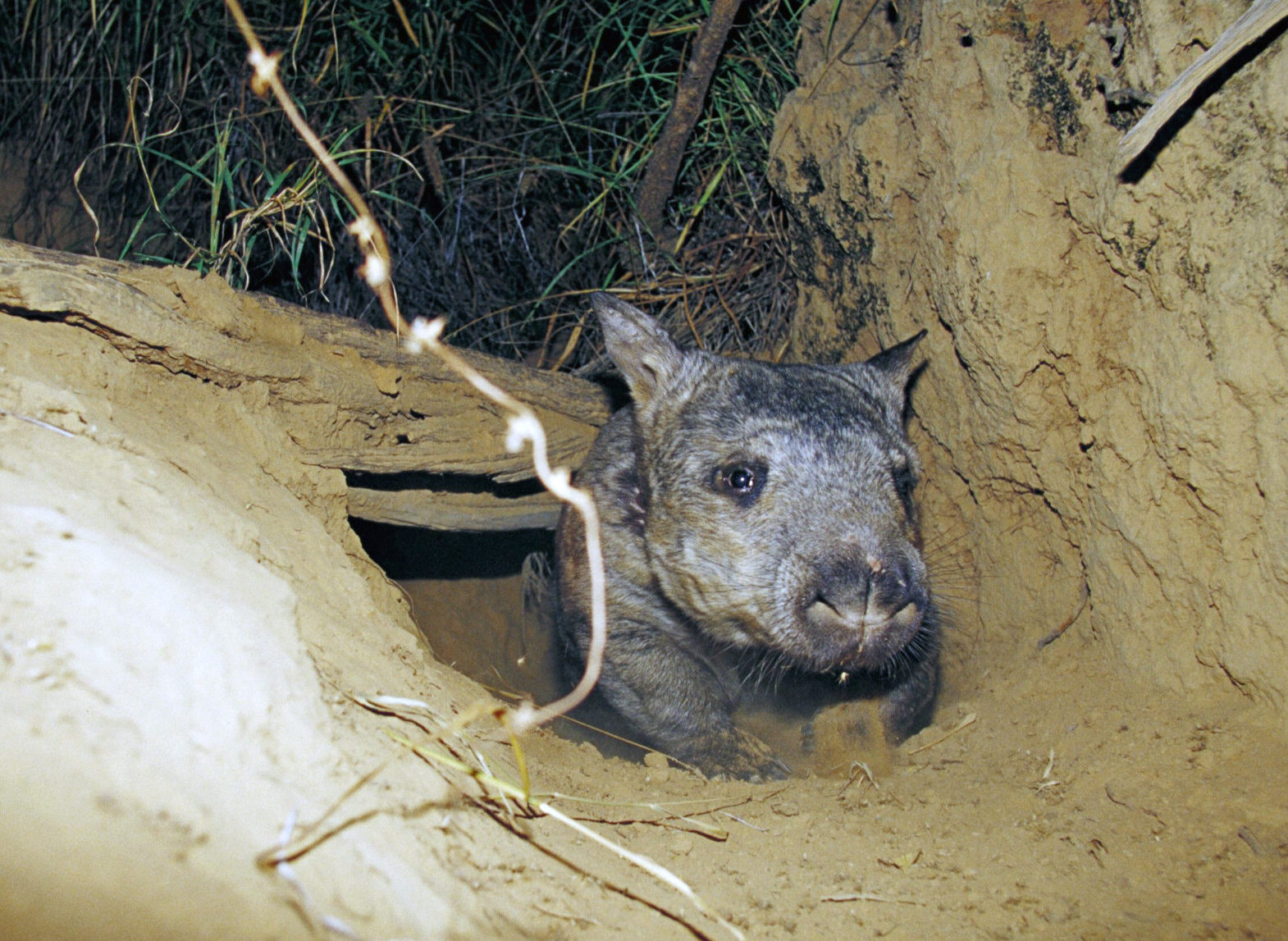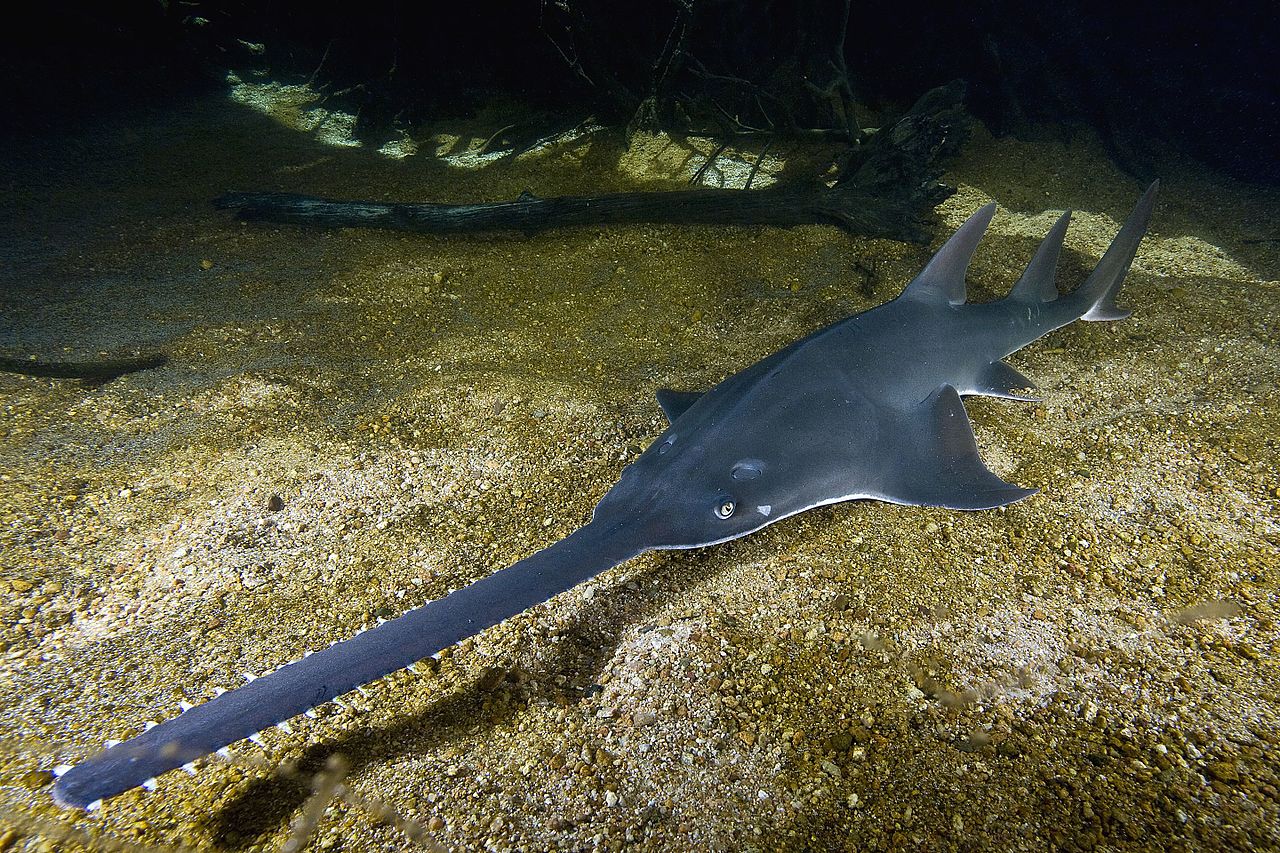| Common name | Brolga |
| Scientific name | Grus rubicunda |
| Type | Bird |
| Diet | Omnivore, feeding mostly on tubers, crops and insects |
| Average lifespan | 30 years |
| Size | 1 – 1.3 metres tall |
Arguably Australia’s most treasured water bird, the brolga is famous for its spectacular dancing ability. Elegant and majestic, a brolga in full flight is also truly a sight to behold.
A member of the crane family, the brolga is a large grey bird with a featherless red to orange patch on its head, grey crown, and a black dewlap (piece of skin) hanging underneath its chin. Sometimes confused with the sarus crane, it’s the legs that will set them apart. A sarus crane has reddish-pink legs, while the brolga has dark grey.
One of Australia’s largest flying birds, the brolga has a wingspan of between 1.7m and 2.4m wide and uses thermal currents to get elevation. At height, brolgas search for suitable habitat, which mostly consists of grassy plains, open wetlands, costal mudflats, and irrigated croplands.
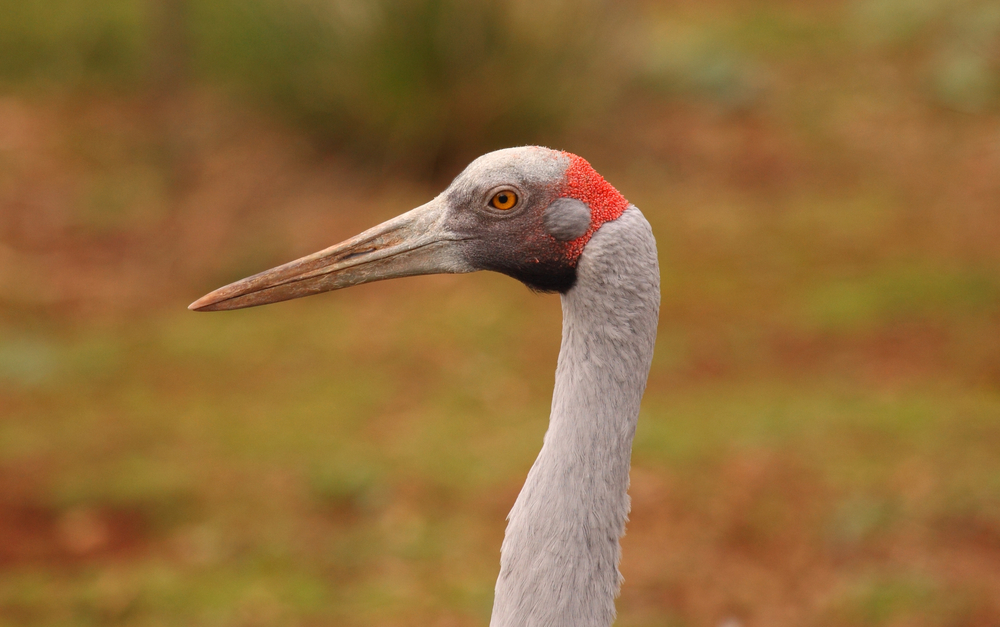
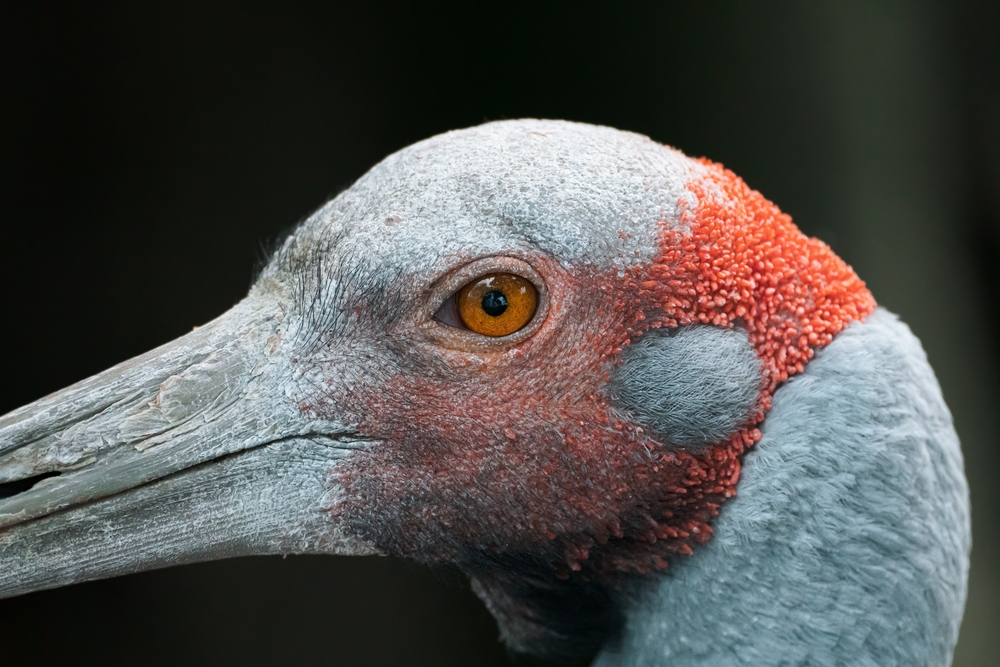
The brolga is found across tropical northern Australia, southwards through north-east and east central areas, as well as central New South Wales to western Victoria. The homebody of the bird world, the brolga doesn’t migrate and has been known to use the same nesting area for up to 20 years.
Outside of the breeding season, brolgas like to keep it all in the family, forming large family groups and flocks of up to one hundred birds. When breeding season begins, the cranes often inhabit shallow marshes where they build nests using grasses, sticks and mud. It’s during this time where the brolga’s mesmerising display of courtship takes place. Ever the romantics, brolgas are thought to mate for life, with a pair’s bond strengthened by an energetic display of dancing, leaping, wing-flapping and loud trumpeting.
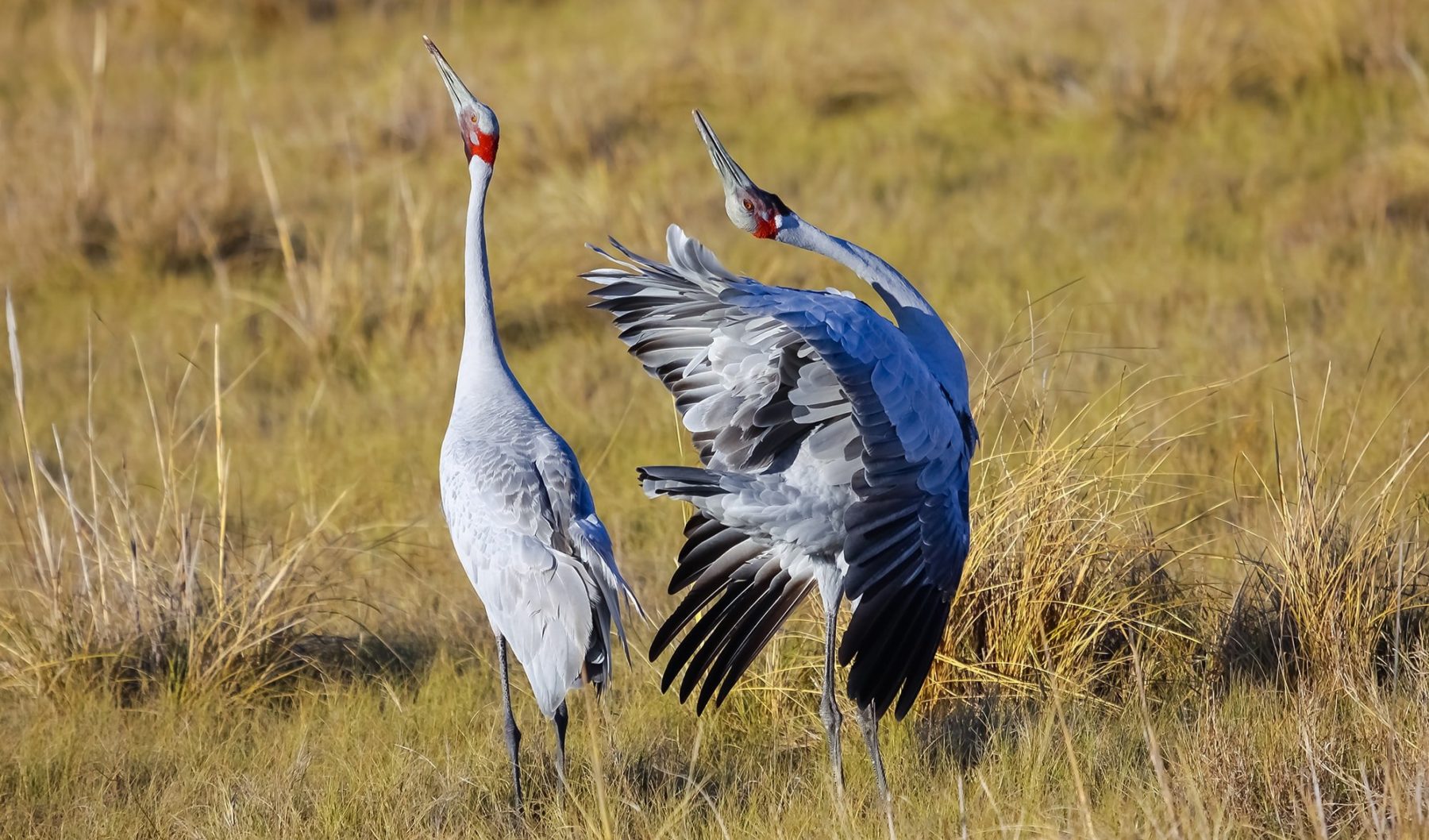
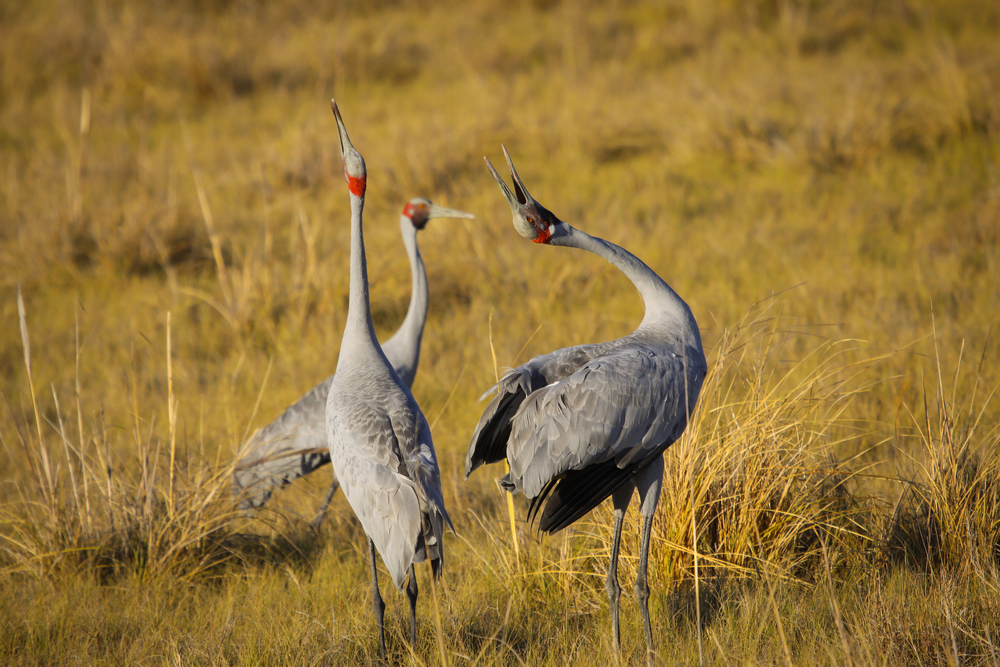
Once the birds establish a territory, they defend it with their life. A single clutch of usually two white eggs that are blotched with brown, and purple are laid within the nest mound and both the male and female brolgas take turns incubating the eggs for around 32 days. The love birds then look after the chicks together.
The silhouette of the dancing brolga is well-known within Australia, and in 1986 the Queensland government made the brolga its official bird emblem. It also decorates the state’s coat of arms, alongside the red deer.
The name brolga is taken from the Aboriginal language Gamilaraay, in which they are called burralga. The bird is deeply respected within Aboriginal culture and many dances and traditional legends are associated with the brolga with Indigenous performers mimicking their impressive dancing technique.

